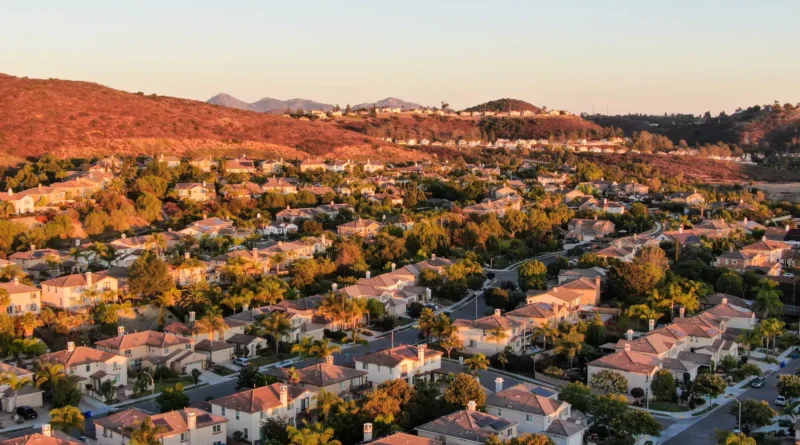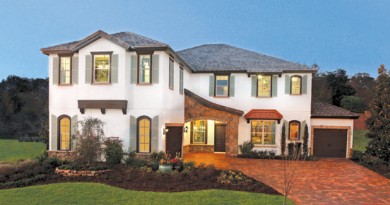Let’s Put That ‘California Exodus’ Narrative to Bed
By Scott Wild
Southern California’s housing market remains one of the most competitive in the nation for homebuilders and homebuyers. Strong job growth, high demand, and a critical undersupply of homes continue to push prices. While affordability is a massive challenge—especially with mortgage rates at 7%—the region continues to outperform Sunbelt markets like Texas and Florida, where a glut of new homes and investor pullback has led to price corrections.
Key market trends to watch
As we head into 2025, several key themes shape the housing landscape across Los Angeles, Orange County, San Diego, and the Inland Empire.
1. Stronger-than-expected demand in a high-rate environment
While many expected rising mortgage rates would trigger a major slowdown, Southern California’s severe lack of housing inventory has elevated home prices and rents.
- Job growth exceeded expectations across Southern California in 2024 despite ongoing labor shortages.
- Home price appreciation remained robust, with Orange County home prices increasing +7% in 2024—one of the highest gains in the country.
- Despite affordability concerns, demand for housing remains high, mainly driven by immigration and buoyed by multigenerational wealth transfers.
2. SoCal metros expect population growth to continue
Although more and more households find homeownership unattainable in this region, the out-migration trend has reversed course. The population of all the major Southern California metros has increased over the last 2 years, and we expect it to continue growing in 2025.”
- Apartments and build-to-rent (BTR) communities are starting to tap into demand farther inland. They provide more affordable in-state alternatives for those willing to accept a longer commute. Working from home some (or all) of the time makes this more feasible.
- Affluent new arrivals from other high-cost areas of the US and other parts of the world often replace those who leave Southern California. High-income buyers from Asia and India continue to fuel the luxury home market.
- With immigration playing a large role in this market’s stability and a major driver of new home demand, policies that would slow the inflow of highly skilled workers into the US are a major risk.
3. Supply constraints continue to prop up prices.
Southern California’s housing market appears to be perpetually undersupplied. Home sales volume is the lowest in decades. This market’s lack of adequate supply is the primary reason home prices continue to climb despite the affordability challenges.
- Regulatory constraints and land availability in coastal markets limit new home construction. Some large new home projects are ramping up in pro-growth and lower-cost inland locations like the Antelope Valley, the High Desert, and the Coachella Valley.
- Buyers outnumber sellers in the resale market as homeowners with irreplaceably low mortgage rates remain on the sidelines, severely limiting the turnover of existing housing stock.
- Infill redevelopment and a boom in ADU construction are helping unlock new housing supply in built-out core locations. In recent years, ADUs have accounted for 15%–20% of new home permits in California.
4. Build-to-rent is growing fast in the Inland Empire.
Build-to-rent (BTR) is one of the fastest-growing segments in the housing industry nationwide. Due to high land costs, BTR has not gained as much traction in Southern California.
- Although it remains challenging for builders to make BTR projects feasible in coastal Southern California markets, they are finding opportunities farther inland.
- The Inland Empire added about 1,600 BTR units over the last 2 years, with another 2,900 planned or under construction—about the same number as in Nashville or Indianapolis.
- One of the largest constraints on BTR in Southern California is competition for new projects from for-sale builders operating in a consistently strong market.
5. Shifting consumer preferences: smaller homes, smarter homes, and more resilient design
Thoughtfully designed homes at attainable price points will succeed, even in this very competitive environment. Homebuyers are increasingly opting for efficient, high-density homes. Expect homebuilders to focus on fire resistance as one of the strongest selling points for new homes.
- 3-story townhomes dominate the entry-level new home market in Los Angeles, Orange County, and San Diego, where “entry-level” can be the $700K–$900K price range.
- For-sale stacked flats are becoming more common and help expand segmentation in Southern California master plans.
- California building codes remain ahead of the curve for energy efficiency and home design. Although homebuilders have bristled at the added costs of new code requirements, recent wildfires highlight their value.
The Southern California housing market continues to defy expectations, holding firm in the face of economic and policy shifts. Southern California has a vibrant, massive economy and remains a place people aspire to live. We expect this market to remain resilient, competitive, and supply-constrained—keeping home prices elevated despite stronger headwinds in 2025 than in 2024.
Scott Wild is the Senior Vice President of Consulting at John Burns Research & Consulting. Wild leads project specific consulting analyses throughout Southern California.


